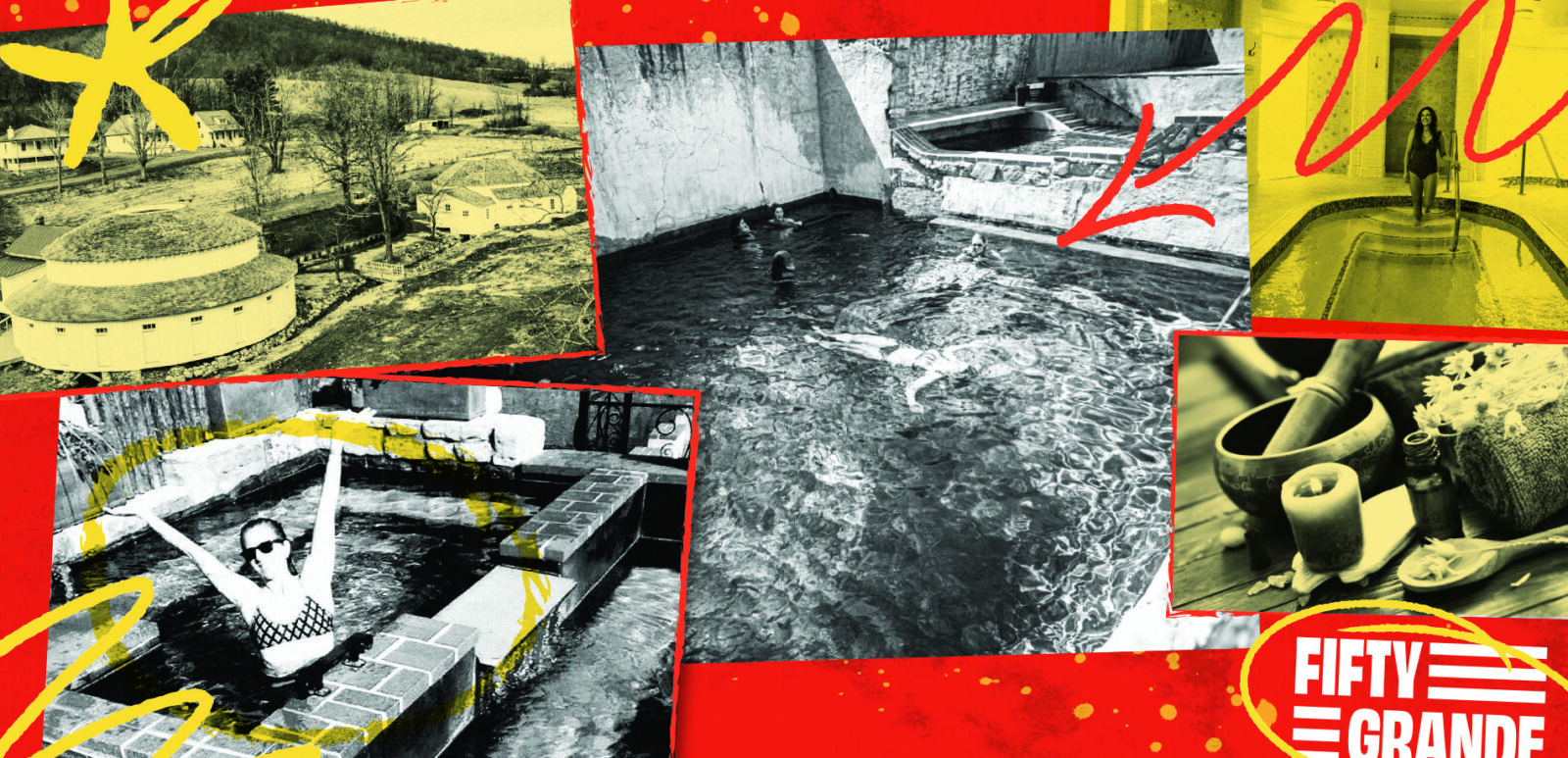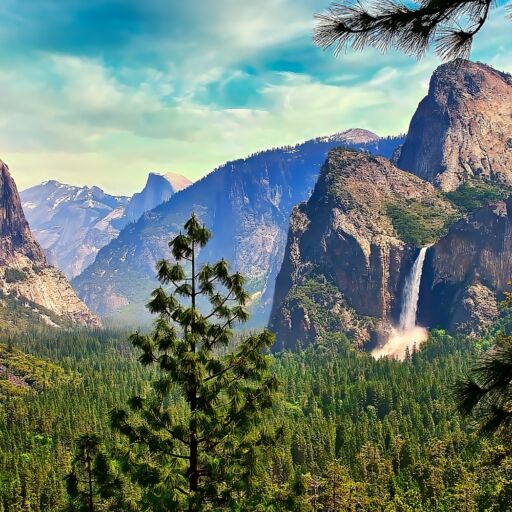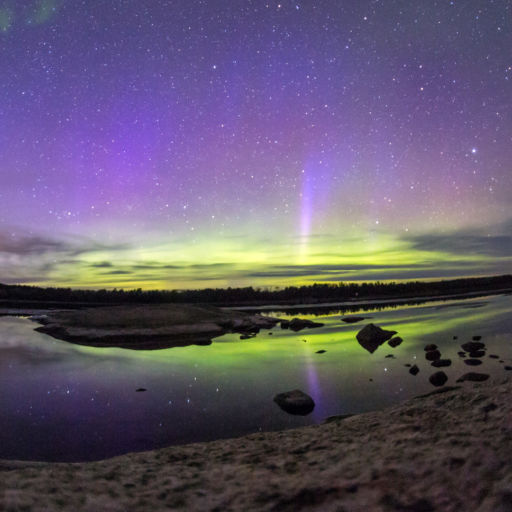Turn onto U.S. route 220, and you can’t miss them: two circular, low, white bathhouses, rising from the verdant grass. Nestled in the mountain’s crook, you feel as if you’re cresting the hill through the forest on foot or horseback.
I’m a Cancer, so basically, the queen of baths. I love a good soak. I’ve driven this winding backcountry highway all the way to the hamlet of Warm Springs, Va., just to spend an hour floating in the historic Warm Springs Pools. (Not an imaginative name, but certainly on point.) The bathhouses are rustic, light-filled and charming. In the men’s (now co-ed) bath, seven small changing rooms rim the central pool, a clear mineral spring bubbling up from Earth. It’s six feet deep and 97 degrees — perfect bath temperature. Sulfurous steam rises as a few other guests and I spend the hour afloat; I draped over a pool noodle. It’s an austere kind of glamour with a reasonable price tag — $30 for 50 minutes — and, only a few years ago, the whole place was falling apart.
Almost forgotten, these 200-year-old bathhouses recently underwent a massive restoration, reopening to the public in 2022. Their renovation is part of a larger resurgence of travel interest — and thus, corporate investment — in “taking the waters,” colonial American slang for soaking in hot springs. The thermal/mineral springs industry was among the fastest-growing wellness sectors right before the pandemic, according to the Global Wellness Institute (GWI), and 18% annual growth is expected through 2025. In 2021, Arkansas’s Hot Springs National Park had 2 million visitors, topping the previous visitation record set in 1970.
This isn’t hot springs’ first time in the limelight. Bathhouses were all the rage among health-minded Americans throughout the 19th century, and Indigenous people used mineral springs for spiritual and healing purposes long before then. Many tribes were the original stewards of geothermal and mineral pools, and introduced European settlers to their healing uses, including curing muscle aches, joint pain and skin rashes. As colonization pushed these original inhabitants west, the idea of the medicinal spa was also gaining popularity in Europe and the United States. New railroads brought an influx of tourists to the mountains, and luxurious hotels and public bathhouses sprung up around and on top of rural mineral waters. Warm Springs is the oldest of these structures: the original stone bathing pool was built in 1761, later joined by hundreds of bathhouses and spas across the United States.
Advancements in medicine and air travel brought this trend to an end. By the early 2000s, the Warm Springs bathhouses were long neglected and dilapidated. In 2010, local advocacy groups began petitioning for their rehabilitation. Finally, in 2013, the property was acquired by Omni Hotels & Resorts, who eventually created an advisory committee of historic preservation experts and began the multimillion-dollar restoration.
While Virginians have enthusiastically welcomed the reopening, this watery resurgence isn’t limited to the Appalachian Mountains. Renovated bathhouses are open all over the country, and, like Warm Springs Pools, you won’t have to break the bank to soak in them. Here are our picks of spring-fed historic bathhouses to keep you warm and relaxed this fall.
Roman Bathhouse
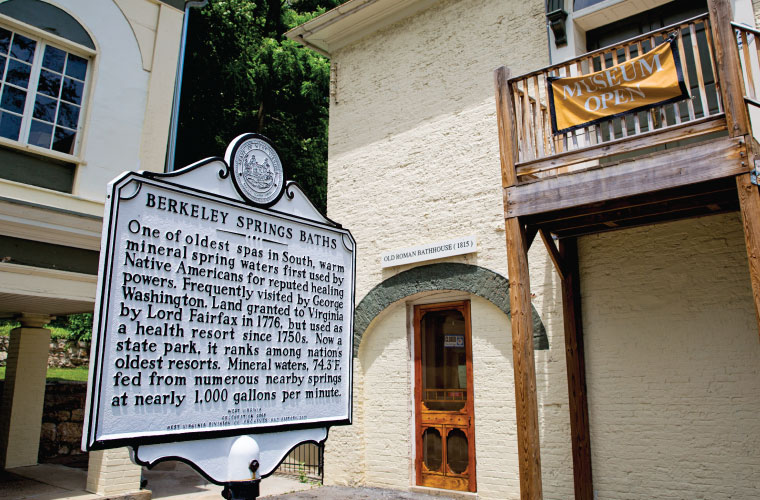
Berkeley Springs State Park, W. Va.
Berkeley Springs ain’t joking around when it calls itself “America’s First Spa.” Indigenous Americans — from Canada and the Great Lakes area to the Carolinas — had been coming to the warm mineral waters (74 degrees F) nestled in the Shenandoah Valley for millennia before European settlers arrived. Sixteen-year-old George Washington visited “ye fam’d warm springs” as part of a 1748 surveying party. (Today, you can still soak in his “bathtub.”) In 1815, Roman Bath House and Gentlemen’s Spring House were built, both of which are still in use. Don’t expect fancy: simple tiled walls frame 750-gallon Roman-style tubs. In 2019, the Old Roman Bathhouse was renovated, including restoring historically accurate details and improving handicapped accessibility.
Built in 1815, the bath house offers soaks that are now $27 per half hour. The bathhouses also offer a variety of spa services.
Buckstaff Bathhouse
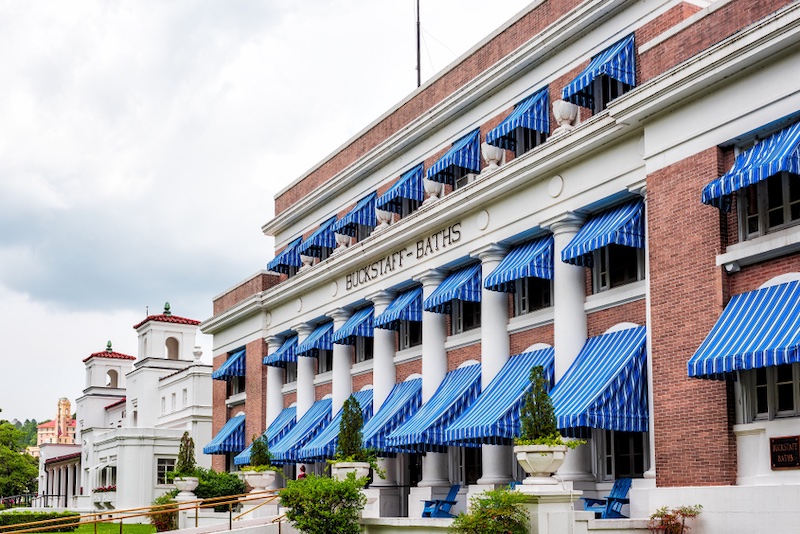
Hot Springs National Park, Ark.
The historic buildings on Bathhouse Row date to the early 20th century, when this area of the Arkansas Ozarks was known for its luxury, horse racing and gambling. Resplendent with stained-glass windows, marble walls and imposing columns, these bathhouses are a physical reminder of the golden age of medicinal spas. While many have been remodeled and repurposed, you can still get the traditional soak experience at the Buckstaff, which has been in continuous operation since it first opened in 1912.
A 20-minute whirlpool soak (102 degrees) is $40. Other spa treatments are also available.
Moccasin Springs Natural Mineral Spa

Hot Springs, S.D.
When owner and proprietor Kara Hagen bought the property in 2014, it was in ruins. All that was left of the turn-of-the-century hotel and bathhouse was a crumbling foundation and rock walls. Trees were growing out of the mineral pools. Rather than start over, Hagen used the historic remains as a central part of the spa’s design, and renovated the 1913 pool and poolhouse. The result is stunning: From the water, your eyes trace the rugged outlines of stone, cement and brick in front of the first backdrop. In the pool house (renovated in 2022), you can take a yoga class or sit by the fire. From the Moccasin Pool (93 degrees F), swim under the archway into the larger 1913 pool, which stays at 88-90 degrees Fahrenheit year-round, thanks to geothermal activity.
$27 for a three-hour soak. Other spa treatments are also available. Spa was first opened in 1890.
Roosevelt Bath and Spa
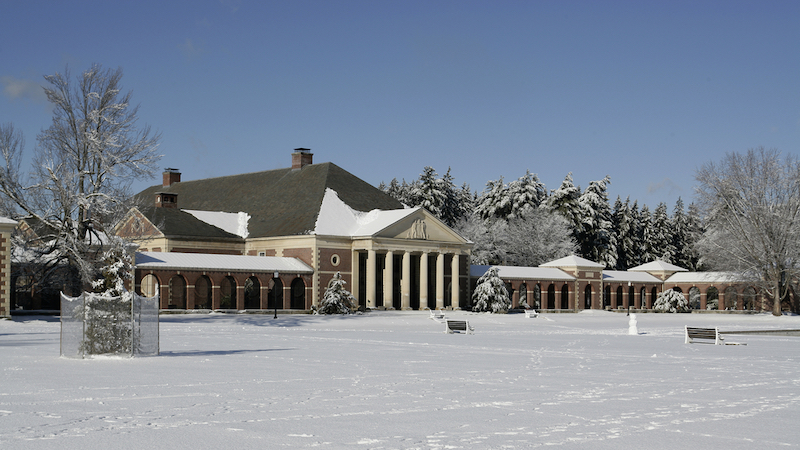
Saratoga Spa State Park, N.Y.
If you’re sensing a slight presidential theme here, you’re not wrong. Established in 1935, the Roosevelt Baths & Spa Saratoga Springs spa resort pays homage to Franklin Roosevelt, who purportedly visited Saratoga Springs while battling polio, and later funded the construction of two new bathhouses through the WPA. A long, redbrick colonial revival building, the current bathhouse iis the only one of four original bathhouses still in use, and is operated by the Gideon Putnam Resort, who have tried to keep the facility experience as close to original as possible. The mineral water here comes from the Lincoln Spring, one of two naturally carbonated springs in the country. It’s naturally cold, so a minimal amount of hot tap water is added (unless you’re keen to shiver).
A 40-minute mineral bath soak is $55. Other spa services are offered. Was built in 1935.
Dr. Wilkinson’s Backyard Resort & Mineral Springs
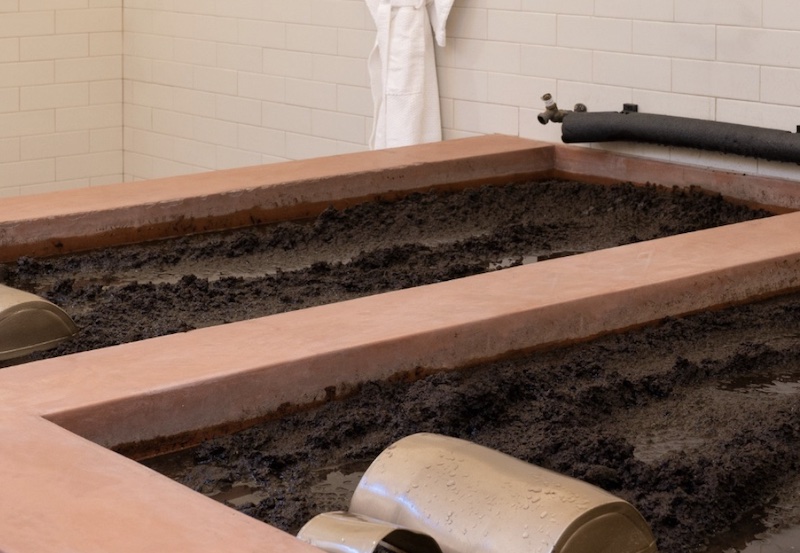
Calistoga, Calif.
While it’s not exactly a bathhouse or an architectural masterpiece, Dr. Wilkinson’s wonky history and retro charm make it a mineral springs must. By the 1920s, Calistoga was well known as a spa town. In the early 1950s, Dr. Wilkinson, a chiropractor obsessed with alternative health treatments, decided to mix it up. He created a special mud bath with a slightly ominous name: “the Works.” After Wilkinson’s death, his son sold the hotel to San Francisco-based Chartres Lodging Group, who preserved the spirit and clean-lined midcentury exterior, but gave the property a much-needed spunk-ify. Bright pink and blue murals decorate the walls behind the three outdoor pools (cool, warm and hot). The iconic red neon sign — and a replica of the Doc’s mint green Buick — remain out front.
Day passes start at $80. Additional spa services available.
Love historic buildings and have a little more cash to spend? Definitely splurge on the mineral waters at the Greenbrier resort in White Sulphur Springs, W. Va., as well as Bedford Springs Resort and Spa in Bedford Springs, Pa. Both offer options for day visitors, and have fascinating architectural and medicinal histories.
Alternatively, if you’re a cheapskate like me, fill up your bottle at the famed mineral tap outside Alt Karlsbad (Carlsbad, Calif.) while you admire the spa’s kitschy faux-medieval German facade, constructed in the late 1800s.


